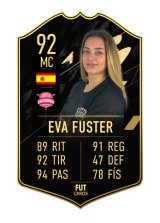Building on The Science Behind Fast, Engaging Web Games, understanding the psychological drivers of player motivation is essential for designing web games that are not only fast and captivating but also deeply engaging. Motivation influences how players interact with a game, how long they stay, and how they progress. By exploring the psychological underpinnings of player engagement, developers can craft experiences that resonate on a cognitive and emotional level, ensuring sustained interest and loyalty.
1. Understanding Player Motivation: An Overview of Psychological Drivers in Web Gaming
a. Differentiating Motivation Types: Intrinsic vs. Extrinsic in Web Games
Player motivation can be broadly classified into intrinsic and extrinsic drivers. Intrinsic motivation arises from internal satisfaction, such as the thrill of mastering a challenge or the enjoyment of storytelling. For example, puzzle games like 2048 or Sudoku attract players due to the personal challenge and mental engagement they offer.
Extrinsic motivation, on the other hand, depends on external rewards like points, badges, or social recognition. Leaderboards in multiplayer games like Slither.io stimulate competitive instincts, encouraging players to improve their rankings through repeated play.
b. The Role of Emotional Engagement and Reward Systems
Emotional engagement enhances motivation by creating a personal connection with the game. Reward systems—such as unlocking new levels, earning trophies, or receiving in-game praise—trigger positive emotions that reinforce continued play. For instance, achieving a high score in a quick action game can lead to feelings of accomplishment that motivate players to beat their previous records.
c. How Motivation Influences Player Retention and Progression
Motivation directly impacts retention rates and progression. A motivated player is more likely to explore the game thoroughly, overcome challenges, and return regularly. Effective game design taps into these psychological drivers to foster long-term engagement, as seen in systems that balance immediate gratification with long-term goals.
2. Cognitive Psychology and Web Game Engagement
a. The Impact of Attention Span and Focus on Gameplay Experience
Web games must capture and maintain players’ attention quickly. Research indicates that players’ attention span for online content averages around 8 seconds; thus, games like Cookie Clicker or Fruit Ninja leverage rapid feedback loops and visual stimuli to sustain focus and reduce cognitive fatigue.
b. Pattern Recognition and Challenge-Solution Dynamics
Humans are naturally inclined toward pattern recognition, which is exploited in many puzzle and strategy games. Recognizing recurring patterns allows players to predict outcomes, creating a sense of mastery. For example, in match-three games like Bejeweled, players learn to identify and exploit patterns for higher scores, reinforcing engagement through challenge-solution cycles.
c. The Influence of Cognitive Load and Flow State on Motivation
Balancing difficulty with player skill is vital. When a game’s challenge matches the player’s ability, they experience a flow state—deep immersion and happiness. Overloading cognitive capacity leads to frustration, while under-stimulation causes boredom. Games like Angry Birds masterfully calibrate difficulty to sustain motivation by keeping players in this optimal zone.
3. Behavioral Psychology Principles in Web Game Design
a. Reinforcement Schedules: Variable Rewards and Habit Formation
Variable ratio reinforcement—rewards delivered unpredictably—are highly effective in habit formation. Slot machines exemplify this principle, and many web games, such as Gacha mechanics, leverage it to keep players engaged, expecting that the next reward might be just around the corner.
b. The Power of Immediate Feedback and Its Effect on Player Persistence
Immediate feedback, such as visual effects or sounds upon completing a task, reinforces behavior. In fast-paced games like Super Hexagon, instant responses encourage players to keep trying, as the connection between action and consequence is clear and satisfying.
c. Social Proof, Competition, and Community as Motivational Catalysts
Players are influenced by others’ actions—social proof—driving engagement through leaderboards, clans, or shared achievements. The presence of a competitive community, as seen in League of Legends or Among Us, fuels motivation through social validation and rivalry.
4. The Psychology of Reward and Achievement Systems
a. Designing Reward Structures to Sustain Long-Term Engagement
Reward structures should balance frequency and significance. Frequent small rewards maintain initial engagement, while rare, substantial rewards motivate sustained effort. Games like Clash of Clans combine daily rewards with major milestones to keep players invested.
b. The Role of Progression Systems and Unlockables in Motivation
Progression systems tap into the desire for mastery and achievement. Unlocking new content or characters provides a sense of growth. For example, in Roblox, players are motivated by unlocking new avatars and abilities, fostering continued exploration.
c. Balancing Challenge and Skill to Prevent Frustration or Boredom
Adaptive difficulty adjusts to player skill, preventing frustration and boredom. This principle underpins the success of games like Dark Souls, where difficulty is high but fair, encouraging perseverance and mastery.
5. Emotional and Social Factors Influencing Player Motivation
a. The Impact of Achievement Recognition on Self-Determination
Recognizing player achievements through badges, titles, or celebrations boosts self-determination and intrinsic motivation. This recognition fosters a sense of competence, encouraging players to pursue further goals.
b. Social Interaction, Cooperation, and Competition as Engagement Drivers
Multiplayer features leverage social bonds and rivalry. Cooperative gameplay enhances motivation through shared goals, while competitive modes, like in Fortnite, activate competitive drives, increasing time spent and engagement.
c. Personalization and Player Identity as Motivational Tools
Allowing players to personalize avatars, customize environments, or craft narratives fosters a unique identity within the game. This personalization increases emotional investment and motivation to continue playing.
6. Non-Obvious Psychological Elements Enhancing Engagement
a. The Role of Narrative and Storytelling in Motivating Players
Narratives create emotional hooks that deepen engagement. Games like Journey or Hades use storytelling to motivate players through emotional investment and curiosity, moving beyond simple mechanics.
b. Unconscious Biases and Heuristics Exploited in Game Mechanics
Designers exploit heuristics such as the recency effect or availability heuristic to influence decision-making and behavior. For instance, frequent, colorful notifications tap into these biases, encouraging players to return.
c. The Influence of Aesthetic and Sensory Stimuli on Motivation
Aesthetics and sensory stimuli—vivid visuals, animations, sounds—activate sensory pathways that enhance motivation. The visual flair of games like Hearthstone or the satisfying sounds of Candy Crush contribute significantly to engagement.
7. Transitioning from Psychology to Game Design Strategies
a. Applying Psychological Insights to Create Engaging Gameplay Loops
Effective game loops incorporate immediate feedback, varied challenges, and reward timing aligned with psychological principles. For example, Among Us sustains engagement through social deduction mechanics that reinforce player interaction and motivation.
b. Customizing Player Experiences Based on Motivation Profiles
Understanding whether a player is intrinsically or extrinsically motivated allows developers to tailor experiences. Adaptive difficulty, personalized rewards, and social features can be combined to optimize engagement for diverse audiences.
c. Ethical Considerations in Utilizing Psychological Triggers
While leveraging psychology enhances engagement, ethical considerations are vital to prevent manipulation. Transparent reward systems and respecting player autonomy foster trust and long-term retention.
8. Connecting Back to the Science of Fast, Engaging Web Games
a. How Understanding Motivation Complements the Technical Aspects of Speed and Engagement
Fast gameplay is more compelling when aligned with psychological motivation. Quick rewards and challenges stimulate dopamine release, creating a cycle of anticipation and satisfaction that encourages repeated play.
b. Integrating Psychological Principles with User Interface and Experience Design
Intuitive interfaces that provide immediate feedback, clear goals, and personalized elements capitalize on psychological triggers to enhance speed and engagement, as seen in minimalist yet responsive designs like Slay the Spire.
c. Future Trends: Leveraging Psychology to Innovate Web Game Engagement
Emerging trends include adaptive AI that personalizes challenges, neurofeedback integration for immersive experiences, and ethically designed reward systems that sustain motivation without exploitation. The synergy of psychology and technology promises a future of deeply engaging web games.

